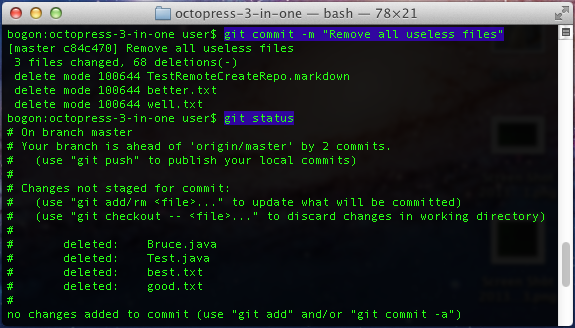

GIT BRANCH RM HOW TO
So in this blog post, we learned about how to delete the local git tag and then push that deletion to the remote. $ git push origin :refs/tags/v2.5įor directly deleting the remote git tag, use the "git push origin" command with -delete option and tag name. Once the tag is removed from local, the next step would be to remove the remote git tag using the command below. Let check both methods of deleting a tag from remote. Another option is to delete the tag from the remote. One is to delete the tag from local first (as shown above) and then push it to the remote. There are two ways to delete the remote git tag. You can run the "git tag" with the -l option to verify that the tag is deleted. Here is an example of how to delete a local tag in git. To know the tag name you can run the "git tag" command with the -l option to list all tags, identify the tag you want to delete. To delete a local git tag simply run the "git tag" command with the -d option and tag name. So in this tutorial, we will see how to delete a git tag from local as well as from remote. It might be possible you have already pushed the wrong git tag to the remote.

In this scenario, you might want to delete the git tag.

A file is removed from both your machine and the Git repository.

Here, I have assumed that the tag you want to remove has been created in Step 3 before with the name branch/$BRANCH. The git rm command removes a file or group of files from a Git repository. Git push origin :refs/tags/$TAG # delete tag in repo Tags that are not needed anymore can be deleted like follows: TAG=branch/$BRANCH We have chosen, not to do so, since only a few of the branches really were needed. git/packed-refs | awk '' | while read BRANCHĮcho "git push -set-upstream origin $BRANCH" # packed-refs might not alwasy work, if the refs are not packed: In a later step, I have sent information to the developers, how they can use the tag to retain their branch. For that, I have written a little script that helps to replace branches by tags. However, I wanted to give everybody the possibility to re-create the branch in question. On one hand, cleaning the repo from binaries was a good opportunity to substantially reduce the number of branches. Step 3 (optional): Replace remote Branches by Tags Step 2: Move and Fork the RepoĪs a kind of backup of the repo, I recommend to move the repository and work on a forked copy of the repo. I recommend that you disallow any changes to the repo apart the one you are performing. Repos like BitBucket allow fine-grained control over who is allowed to do what. The changes are destructive, and even if you fork the repository, there is no easy way to revert all the changes. In our case, the GIT history has grown to 223 MB, because a binary of ~40 MB was updated several times: du -h -d 1įirst of all, you need to inform everybody, what you are going to do, and when it will be done. See this GIT repo, which will promote a simple example how BFG can be used. However, I have tested BFG privately in this GIT Repo and I can recommend its usage.
GIT BRANCH RM SOFTWARE


 0 kommentar(er)
0 kommentar(er)
